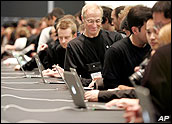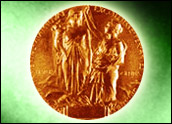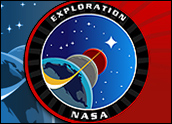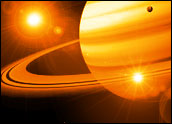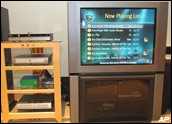
The results are in, and NASA’s latest fly-by of Mercury is shedding new light on the solar system’s smallest planet. The Messenger space probe zipped around Mercury early in October, examining parts of the planet never before explored.
The latest mission is the second of three passes Messenger will take around the planet. The first occurred in January and marked Mercury’s first significant exploration since the ’70s. Now, we’re gaining new insight into the planet that has, until now, remained a mystery.
Explosive Findings
Messenger’s images indicate far more volcanic activity than previous data had shown — a sharp contrast from the one-time belief that Mercury was little more than an inactive rock. Even more telling: the varied craters, and the material discovered within them.
“They found that there seems to have been a lot of stuff that has come out of the inside of Mercury and come onto the surface, kind of ‘smooth plains material,'” Rich Talcott, senior editor of Astronomy Magazine, told TechNewsWorld.
Those same craters also led Messenger to find new evidence of a kind of “dark blue material” — at least, blue when viewed through NASA’s infrared cameras. In actuality, the goo would have only a slightly blue tint, but it’s still a stark contrast from the rest of the surface. No one’s sure exactly what it is, though, or why it’s in some places and not others.
“There was one spot where they had two craters almost precisely the same size and they were right next to one another,” Talcott explained. “One of them was filled with this blueish material [and] the one next to it was completely devoid of it — so there seems to be some process at the time they had formed that was different,” he said.
Challenging Beliefs
All the signs of activity suggest Mercury may have had more volcanoes than the moon — a concept that would challenge past astronomical beliefs.
“Mercury seems to be quite a bit different from the moon. Until these Messenger fly-bys, I think a lot of people thought the moon was a good analogy for what Mercury was like,” Talcott pointed out.
Still, plenty of uncertainty remains. NASA hopes to uncover further answers in its coming missions, but there is plenty of new ground to be analyzed.
“We’ve seen a new area that’s probably a little bit bigger than the size of South America,” Talcott noted. “It’s an area no spacecraft has actually seen before.”
The Messenger spacecraft is set to make its third fly-by next September. It will enter orbit around Mercury for an entire year beginning in March 2011.

